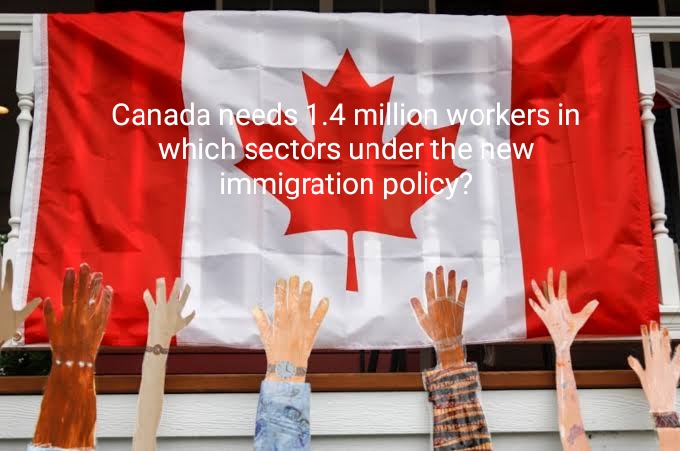Canada needs 1.4 million workers in which sectors under the new immigration policy?
See, it's simple. We need more people.
Canadian Immigration Minister Sean Fraser said this while inaugurating a plan to welcome nearly 1.4 million immigrants over the next three years.
Canada will welcome 465,000 new permanent residents in 2023, Sean Fraser announced. In the year 2024, four hundred and eighty-five thousand, while in the year 2025, five hundred thousand more people will move to Canada for the purpose of future residence.
This means that the Canadian government's initial goal of resettling immigrants has increased by about 13 percent.
The main objective of this Canadian initiative is to fill the current shortage of jobs in all sectors. There are thousands of jobs available in various departments in Canada that are yet to be filled.
This situation in Canada is completely different from the immigration policies of the United States and the United Kingdom. The UK has been heavily criticized for its immigration policy, while the US has recently taken steps to tighten immigration controls.
Sean Fraser said that through the new immigration plan in place in Canada, it will now help to find employees for various sectors.
One of the main reasons behind the fresh start is that job vacancies that fell vacant during the Covid-19 pandemic could not be filled again.
It should be noted that up to one million Canadians are currently unemployed, mainly because they are either unable to work or do not want to take on jobs that are currently available in the market. That is why Canada needs workers from abroad.
In addition to this trend, the government has indicated that more and more Canadians are leaving their jobs, creating a void that must also be filled.
In addition, the program is an effort to enhance the resettlement of refugees who are currently dependent on government assistance.
But who are the people the Canadian government is looking for?
Health sector, software and restaurants
It's not the first time Canada has opened its borders to attract more immigrants, but it's the first time it's been done on this scale.
"Canadians understand the need for their population to grow," Sean Fraser said during the opening ceremony of the new project. We're going to meet the workforce needs, if we're going to balance a worrisome demographic trend and reunite families."
Although the government has indicated that the shortage of skilled workers affects all sectors of the Canadian economy, data from government analyzes indicate that one of the sectors most affected is the issue of medical services.
And this sector is followed by construction, manufacturing, hotel and tourism sectors, including the restaurant industry.
"We need more workers in all sectors in all regions of the country, whether they are front-line healthcare workers, truck drivers, home builders (i.e. labourers) or software engineers," said Shaun Fraser. .'
Canada's Conservative Party, which opposes Justin Trudeau's government, criticized the government's decision announced this week, but acknowledged the need to open immigration.
However, some experts have pointed out that this will not be an easy process due to the financial crisis, which is facing not only Canada but the world's major economies, and which is causing interest rates to rise and inflation to rise.
Thus, University of Waterloo Economist Michal Scottrod points out that although there are many reasons for the increase in the number of immigrants in Canada, the current situation is not very favorable for the start, which the North American country wants to achieve.
"Increasing interest rates could make it more difficult for these people to enter the country," Michal Skotrod told Reuters.
"We are at a real tipping point where there is a lot of uncertainty," he added.


0 Comments